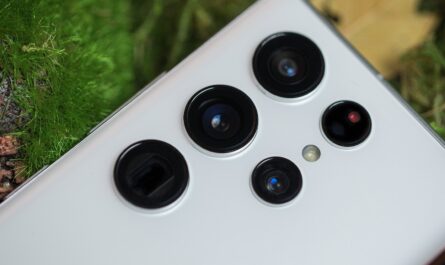In recent years, the integration of science and medicine has led to significant advancements in medical technology, improving the lives of many patients. One notable innovation is the development of electronic devices that can be implanted in the body, such as in the heart or brain, allowing for real-time measurement and regulation of physiological signals. These devices have opened up new possibilities for treating conditions like Parkinson’s disease. However, one major challenge is the limited durability of these electronic implants.
To address this issue, a collaborative research team led by Professor Sung-Min Park from POSTECH has made a groundbreaking discovery. They have developed electrostatic materials that can function even with extremely weak ultrasound, paving the way for the development of permanent implantable electronic devices in biomedicine. Their findings have been published in the journal Advanced Materials.
One of the main drawbacks of current implantable devices is the need for periodic surgeries to replace the batteries. This not only poses a risk of complications but also imposes economic and physical burdens on patients. In recent years, there has been research into wireless implantable medical devices, but finding a safe energy source and suitable protective materials has proven to be challenging. Currently, titanium is used due to its biocompatibility and durability. However, radio waves cannot pass through titanium, necessitating the use of a separate antenna for wireless power transmission. This increases the size of the device, causing discomfort for patients.
The research team sought to address this issue by using ultrasound, a method that has been validated for safety in various medical fields, instead of radio waves. They developed an electrostatic material that can respond to weak ultrasound by combining high dielectric polymers (P(VDF-TrFE)) with a high dielectric constant ceramic material called calcium copper titanate (CCTO, CaCu3Ti4O12). This novel material generates static electricity through friction between its layers, producing effective electrical energy. It also has an extremely low output impedance, enabling efficient transmission of the generated electricity.
Using this technology, the research team created an implantable neurological stimulator that is powered by ultrasound-based energy transmission, eliminating the need for batteries. The effectiveness of this device was confirmed through experimental validation. In animal model trials, the device was activated even at standard imaging ultrasound levels, causing minimal strain on the human body. It was also successful in mitigating symptoms related to abnormal urination caused by overactive bladder disorders through nerve stimulation.
Professor Sung-Min Park expressed his excitement about this discovery, stating that they have addressed the challenges in the field of implantable medical devices by using ultrasound-based energy transmission technology that is harmless to the human body. He believes that this research will pave the way for advanced material technology in medical devices and will contribute to the emergence of a next-generation medical industry, particularly in the treatment of intractable diseases using implantable devices.
Implantable medical devices made from highly biocompatible materials offer excellent mechanical and chemical stability, making them suitable for long-term therapy. By eliminating the need for batteries and using miniaturized components with established long-term stability, these devices have the potential to bring forth new innovations in the market of human-insertable medical devices.
The research team also included Jiho Lee, a student enrolled in the MS/Ph.D. program, Professor Sang-Woo Kim from Yonsei University’s Department of Materials Science and Engineering, Dr. Young-Jun Kim, and MS/Ph.D. student Joon-Ha Hwang from Sungkyunkwan University.
*Note:
1. Source: Coherent Market Insights, Public sources, Desk research
2. We have leveraged AI tools to mine information and compile it




